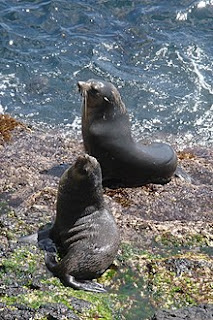Isa Rosso
 |
| Me!!! |
Few thoughts.. Today was laundry day: I just realized the second week has passed.. Funny, I think there’s a standard number of days after which you suddenly realize you have your own routine, schedule, plan for the day. In my case varies between 7 and 14.
As I anticipated in my previous post, I had my first birthday onboard. My new group of friends have organized my very first surprise party!! At midnight of the 16th, my roommate tells me that she wanted to go out to take some pictures. Despite my question mark painted on my face (I don’t know what the temperature was outside, but definitely not comfortable), I followed her.. And at the heli hangar, my group was there, singing me a Happy Birthday song that they wrote for me!! <3 my heart exploded!! And then the night started, with chocolate cake, dances, presents, songs.. and a bit of rhum ;-) It was fantastic, and I’ll never forget it!!
The ocean just turned into that gray shade, typical of these latitudes. These furious ocean and howling wind make me feel like at home. We just left the Roaring Forties, and approaching the Furious Fifties, towards 54S. The winds here are indeed no joke! We went outside after dinner, on the 4th deck.. The wind is so strong that you have to hold on to something (or someone) to keep your balance! All around.. there’s the white of the overcast sky, and the mist towards the horizon.. very gloomy. We are very close to the Kerguelen Islands at this point: I checked, but there’s no sign of them (see picture ;o) ).
 In these past days, we had few scientific activities planned, the biggest being the recovery of the mooring which was deployed the last year. Unfortunately, after a 2-day search and wait, the mooring was not found. There’s still some hope on the way back, and I truly wish for the group who deployed it to find it! Lots of precious data are awaiting somewhere in the depths of the dark ocean to be rescued.. and their secrets to be told.
In these past days, we had few scientific activities planned, the biggest being the recovery of the mooring which was deployed the last year. Unfortunately, after a 2-day search and wait, the mooring was not found. There’s still some hope on the way back, and I truly wish for the group who deployed it to find it! Lots of precious data are awaiting somewhere in the depths of the dark ocean to be rescued.. and their secrets to be told.













































